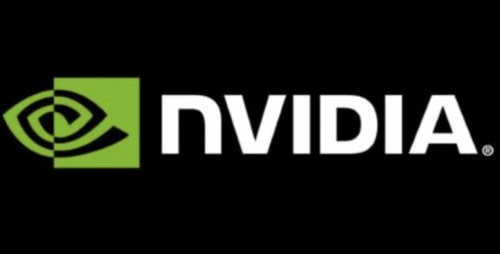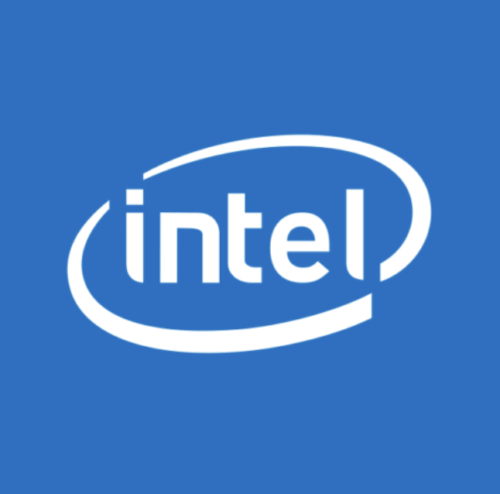If you’re looking to invest in the tech world’s backbone, understanding the best silicon stocks is a smart place to start.
Silicon powers nearly every device and breakthrough, from AI to smartphones to data centers, and the companies behind these chips are at the heart of tomorrow’s innovation.
![]() With the rollout of 5G and the significant shift to electric vehicles, the silicon industry is forecasted to grow rapidly in the coming years.
With the rollout of 5G and the significant shift to electric vehicles, the silicon industry is forecasted to grow rapidly in the coming years.
Let’s look into the best silicon stocks to buy right now and the reasons why they’re worth adding to your portfolio.
TL;DR: Best Silicon Stocks To Add
- Nvidia (NVDA): AI chip leader powering modern computing.
- Advanced Micro Devices (AMD): Strong CPU and GPU competitor in AI.
- Broadcom Inc. (AVGO): Diversified semiconductor giant with software edge.
- Micron Technology (MU): Leading memory chip manufacturer.
- Intel Corp. (INTC): Legacy chipmaker investing in new tech.
- Marvell Technology (MRVL): Networking and storage semiconductor solutions.
- SiTime Corp (SITM): Silicon MEMS timing device innovator.
- Silicon Laboratories (SLAB): Microcontrollers and sensor silicon chips.
- Dow Inc. (DOW): Advanced silicon materials for chipmaking.
Best Silicon Stocks That You Can’t Miss
Nvidia (NASDAQ: NVDA)
Overview
Nvidia stands at the forefront of the semiconductor industry, widely recognized for revolutionizing the graphics processing unit (GPU) market.
While it began as a company focused on gaming GPUs, its evolution into an AI powerhouse has propelled it into new heights.
 Today, the technology it develops underpins everything from cutting-edge artificial intelligence applications to cloud computing and autonomous vehicles.
Today, the technology it develops underpins everything from cutting-edge artificial intelligence applications to cloud computing and autonomous vehicles.
The company’s GPUs accelerate complex computations, making them essential for AI model training and inference tasks.
Moreover, Nvidia’s strong software ecosystem, especially the CUDA platform, makes it a favorite among developers and researchers alike.
This blend of hardware innovation and software support gives it a durable competitive edge.
Growth Catalysts
AI continues to be the biggest driver behind this chipmaker’s remarkable growth trajectory.
The explosion of AI-driven services, from chatbots to recommendation engines, is driving demand for high-performance GPUs designed to handle large-scale machine learning tasks.
Cloud providers, data centers, and enterprises rely heavily on Nvidia’s products to power their AI workloads.
Besides AI, growth in gaming, professional visualization, and automotive sectors further broadens its revenue base.
The company’s recent ventures into partnerships with leading cloud platforms and expansions into edge computing solidify its position across the tech landscape.
Additionally, ongoing investments in developing next-generation GPU architectures promise to maintain performance leadership for years to come.
Risks
Even with a stellar track record, several risks linger.
The semiconductor space is fiercely competitive, with AMD and other chipmakers rapidly advancing their own AI-focused products.
Trade tensions and export controls, especially those involving China, pose regulatory challenges that could limit access to key markets.
Given Nvidia’s premium valuation, any sign of slowing growth or missed earnings targets can lead to sharp market reactions.
Supply chain disruptions remain a potential concern as global geopolitical factors continue to unsettle chip manufacturing and distribution.
Conclusion
Nvidia’s blend of innovation, market dominance, and AI-driven growth makes it a compelling choice for anyone seeking exposure to the future of computing.
While risks exist, its leadership in AI chip technology positions it well to capitalize on one of the fastest-growing segments of the tech industry.
For those looking to invest in silicon stocks with a strong growth story and a robust ecosystem, this company stands out as a clear frontrunner.
Advanced Micro Devices (NASDAQ: AMD)
Overview
Once seen as a distant competitor, this chipmaker has transformed into a serious challenger in both the CPU and GPU markets.
It now holds a significant stake in powering personal computers, servers, and gaming consoles worldwide.
 Beyond just consumer electronics, the company’s chips have increasingly found their way into data centers where artificial intelligence and cloud computing thrive.
Beyond just consumer electronics, the company’s chips have increasingly found their way into data centers where artificial intelligence and cloud computing thrive.
By acquiring companies with strong footholds in programmable logic and AI software, it has broadened its portfolio significantly.
Its focus on delivering high-performance and energy-efficient products has earned it the trust of major cloud service providers and enterprise clients alike.
As a result, it has become a household name among those looking for growth in silicon stocks.
Growth Catalysts
The ongoing surge in demand for data center solutions, especially driven by AI workloads, continues to boost growth.
The company’s server processors are increasingly favored in cloud infrastructure for their competitive performance and power efficiency.
Expansion into heterogeneous computing, combining CPUs with GPUs and field-programmable gate arrays, provides a powerful platform tailored for AI applications.
Its presence in the gaming industry remains strong, with consoles and PC markets demanding better graphics and processing power.
Strategic acquisitions not only widen its product range but also open doors to specialized AI software markets, offering recurring revenue potential.
Continued advancements in chip design, manufacturing partnerships, and aggressive pricing strategies position the company well for sustained expansion.
Risks
Competition is fierce, and rivalry with established giants and emerging players requires constant innovation and significant capital investment.
Supply chain issues, still influenced by global geopolitical tensions, can cause disruptions or increase costs.
While acquisitions offer growth opportunities, integrating diverse businesses is complex and can distract from core operations.
Additionally, macroeconomic factors such as fluctuating consumer demand and enterprise spending cycles may impact financial performance.
Given the rapid pace of technological change, failure to keep up could lead to loss of market share.
Conclusion
With its broadening technology base, strong market presence, and AI-focused growth strategy, this semiconductor player represents a promising silicon stock.
Though challenges exist, the company’s ability to innovate and penetrate multiple high-growth markets makes it a worthwhile consideration for people seeking exposure to the evolving chip landscape.
Broadcom Inc. (NASDAQ: AVGO)
Overview
Broadcom stands out as a unique player in the semiconductor industry by combining traditional chip manufacturing with a strong presence in infrastructure software.
 Its chips are critical in networking, broadband, wireless communications, and enterprise storage, serving some of the world’s largest technology companies.
Its chips are critical in networking, broadband, wireless communications, and enterprise storage, serving some of the world’s largest technology companies.
The company enters the fray with a diversified revenue mix, combining semiconductor sales with recurring software income, which helps stabilize its earnings in an otherwise cyclical industry.
This blend of hardware and software offerings makes it a resilient choice within the silicon stock universe.
Growth Catalysts
One of the main drivers behind Broadcom’s continued growth is its expanding role in data centers, especially as AI adoption increases.
High-speed networking and storage components supplied by Broadcom are essential for handling massive amounts of data generated by AI models.
Its leadership in 5G infrastructure and broadband connectivity ensures steady demand as telecommunications networks upgrade worldwide.
The company’s successful acquisition strategy broadens its product portfolio and customer base, allowing it to innovate and cross-sell products.
Broadcom’s ability to integrate software with its chip offerings deepens customer relationships and creates high switching costs, which are significant competitive advantages in this market.
Risks
While the company enjoys strong fundamentals, integration risks from frequent acquisitions can pose challenges.
The semiconductor market is fiercely competitive, with players ranging from giants like Intel to nimble startups vying for market share.
Additionally, global supply chain issues and geopolitical tensions, especially those affecting the U.S.-China trade, could disrupt operations or restrict market access.
Regulatory scrutiny on mergers and acquisitions may also slow down growth strategies.
Market cyclicality means certain product lines may see fluctuating demand, which can impact revenue stability.
Conclusion
Broadcom’s diversified business model, combining chips and software, makes it a compelling silicon stock with robust growth potential, particularly in AI and networking.
Although risks exist from competition and geopolitics, its strong market position and recurring revenue streams provide a solid foundation for people seeking stability and growth.
Micron Technology (NASDAQ: MU)
Overview
Micron Technology is a global leader in memory and storage solutions, specializing in DRAM and NAND flash memory chips that are vital components in everything from smartphones and PCs to data centers and automotive electronics.
Memory chips form the backbone of modern computing by enabling fast data storage and retrieval, making Micron an essential player in the semiconductor supply chain.
Its ongoing investments in advanced manufacturing technologies have helped it maintain a competitive edge, allowing it to produce high-capacity, energy-efficient memory products demanded by an ever-growing digital ecosystem.
Growth Catalysts
The massive growth in data creation fueled by AI, cloud computing, and mobile devices is driving unprecedented demand for memory chips.
As organizations increasingly rely on AI workloads and real-time analytics, the need for fast and large-scale memory solutions grows accordingly.
Emerging markets such as edge computing and connected vehicles are also expanding the use cases for Micron’s products.
Technological advancements, including 3D NAND architectures and higher-density DRAM, enable more powerful and efficient chips, strengthening Micron’s position.
Capacity expansions in new fabs aim to address global shortages and capture a larger market share.
Strategic partnerships with leading OEMs further solidify its foothold across multiple sectors.
Risks
Memory markets are known for their volatility, with cyclical swings in supply and demand that can lead to sharp price fluctuations.
Competition from other major memory manufacturers, especially Samsung and SK Hynix, places constant pressure on margins and market share.
Building and upgrading fabrication facilities is capital-intensive, and any missteps could hurt profitability.
Additionally, geopolitical tensions and global supply chain disruptions remain ongoing risks that could impact production schedules or customer access.
Economic downturns can also reduce demand from consumer electronics and enterprise customers.
Conclusion
Micron’s critical role in powering today’s data-driven world, combined with its technological leadership, makes it a strong silicon stock for individuals focused on memory and storage growth.
While cyclical and competitive risks exist, the company’s investments in innovation and capacity position it well for long-term opportunities in a rapidly expanding market.
Intel Corp. (NASDAQ: INTC)
Overview
Intel is one of the most established names in semiconductors, known historically for its dominance in CPU manufacturing for personal computers and servers.
Recently, it has embarked on a significant transformation to reclaim technological leadership amid intensifying competition.
 The company is investing heavily in advanced chip fabrication technologies and expanding its foundry services to manufacture chips for other companies.
The company is investing heavily in advanced chip fabrication technologies and expanding its foundry services to manufacture chips for other companies.
Intel’s broad product portfolio spans CPUs, AI accelerators, memory, and more, with an increasing focus on data center and artificial intelligence markets to drive future growth.
Growth Catalysts
Central to Intel’s strategy is its aggressive investment in modernizing its fabrication plants with state-of-the-art process nodes, aiming to close the gap with competitors like TSMC and Samsung.
Its IDM 2.0 initiative positions Intel not just as a chip designer but also as a contract manufacturer, opening new revenue channels by building chips for external clients.
The company’s focus on AI chip development and partnerships with cloud providers aims to capture a growing share of this high-growth market.
Additionally, Intel’s solid footing in PCs and data centers provides a steady revenue base as it expands into adjacent markets such as edge computing and automotive semiconductors.
Risks
Despite its legacy, Intel faces significant headwinds. Its rivals have made considerable technological advances, and catching up requires flawless execution of expensive capital projects.
The complexity of ramping up new manufacturing technologies brings execution risk that could delay product launches or impact yield.
Competitive pressure from AMD and Nvidia remains intense across core markets. Geopolitical uncertainties and supply chain challenges also present risks to production and global sales.
Moreover, sentiment remains cautious given past delays and market share losses.
Conclusion
Intel’s ambitious transformation plan and diversified product lineup offer promising growth potential for individuals willing to accept execution and competitive risks.
Its investments in advanced manufacturing and expanding foundry services may reshape its future, making it an important silicon stock to watch in the evolving semiconductor landscape.
Best Silicon Material Stocks
Marvell Technology (NASDAQ: MRVL)
Overview
Marvell Technology is a prominent semiconductor company that specializes in designing chips used in data storage, networking, and connectivity.
Its solutions are vital to the infrastructure supporting cloud computing, 5G telecommunications, and automotive technologies.
 Unlike many chipmakers focused solely on consumer electronics, Marvell plays a critical role in enabling the data flow and processing power that bring modern digital services to life.
Unlike many chipmakers focused solely on consumer electronics, Marvell plays a critical role in enabling the data flow and processing power that bring modern digital services to life.
Its portfolio includes custom silicon products tailored for hyperscale cloud providers, giving it a competitive edge in highly specialized markets.
Growth Catalysts
The rollout of 5G networks worldwide is a significant growth driver for Marvell, as its chips support high-speed data transmission essential for this technology.
Cloud computing demand continues to climb, and Marvell’s customized solutions for large cloud providers position it to capture a larger slice of this expanding market.
Automotive Ethernet, a growing segment as vehicles become increasingly connected and autonomous, represents a promising new revenue source.
The company’s emphasis on R&D and tailored silicon solutions creates high barriers for competitors and fosters strong customer loyalty.
As AI workloads expand, the demand for efficient data processing and networking equipment further bolsters Marvell’s growth prospects.
Risks
While Marvell benefits from exposure to fast-growing markets, it operates in a highly competitive environment dominated by larger semiconductor players.
Rapid technological changes require ongoing innovation, which can be costly and challenging to sustain.
Global supply chain disruptions and geopolitical issues, particularly around U.S.-China relations, may affect production and sales.
Demand fluctuations in cloud infrastructure and automotive markets could introduce revenue variability.
Additionally, as a fabless company relying on third-party manufacturers, Marvell faces risks related to manufacturing capacity and logistics.
Conclusion
Marvell Technology’s strategic focus on cloud, 5G, and automotive networking chips positions it well to capitalize on critical growth areas in silicon materials.
While competition and external risks exist, its customized approach and innovation-driven culture make it an attractive silicon stock for those looking to tap into next-generation infrastructure.
SiTime Corp (NASDAQ: SITM)
Overview
SiTime Corp is a pioneer in silicon MEMS (Micro-Electro-Mechanical Systems) timing devices, offering an innovative alternative to traditional quartz crystal oscillators.
Its timing solutions are critical components used for synchronization in a wide range of electronics, including smartphones, networking equipment, automotive systems, and industrial IoT devices.
 By leveraging silicon MEMS technology, SiTime delivers products that are smaller, more reliable, and more resistant to shock and temperature variations compared to quartz-based timing devices.
By leveraging silicon MEMS technology, SiTime delivers products that are smaller, more reliable, and more resistant to shock and temperature variations compared to quartz-based timing devices.
This technological edge has enabled the company to carve out a significant niche in the semiconductor materials ecosystem.
Growth Catalysts
The shift toward silicon MEMS technology underpins much of SiTime’s growth potential.
As electronics become smaller and more sophisticated, demand for precise and reliable timing components increases, particularly in fast-growing sectors such as 5G infrastructure, automotive electronics, and IoT applications.
SiTime’s solutions offer advantages in size, performance, and integration, making them appealing for devices requiring high precision and ruggedness.
Additionally, the company’s expanding customer base across telecommunications, automotive, and consumer electronics sectors fuels consistent revenue growth.
Its strong R&D pipeline and focus on innovation keep it ahead of legacy quartz crystal competitors and open opportunities in emerging markets.
Risks
Despite its innovative technology, SiTime operates in a relatively niche market with significant competition from established quartz oscillator manufacturers and other MEMS suppliers.
Market adoption can be slow, as switching from traditional components requires time and capital from customers.
The company’s reliance on a limited set of customers increases concentration risk. Ongoing innovation is necessary to maintain its competitive advantage, and failure to evolve could lead to market share erosion.
Furthermore, supply chain disruptions or manufacturing challenges could impact product availability.
Conclusion
SiTime’s silicon MEMS timing devices represent a cutting-edge segment within the silicon materials market, offering unique benefits that drive adoption across multiple high-growth industries.
While niche market challenges and competition exist, the company’s technological leadership and growing footprint make it a compelling silicon stock for people seeking exposure to innovative semiconductor materials.
Silicon Laboratories Inc. (NASDAQ: SLAB)
Overview
Silicon Laboratories, often called Silicon Labs, designs and manufactures silicon-based microcontrollers, wireless chips, and sensors.
![]() Its products enable smart connectivity and sensing capabilities across a broad spectrum of industries, including IoT, automotive, industrial automation, and consumer electronics.
Its products enable smart connectivity and sensing capabilities across a broad spectrum of industries, including IoT, automotive, industrial automation, and consumer electronics.
By focusing on low-power, high-performance chips, Silicon Labs supports the growing demand for energy-efficient and reliable devices.
Its diversified product portfolio and emphasis on innovation make it a significant player in the silicon materials space.
Growth Catalysts
The rapid expansion of the Internet of Things (IoT) is a major growth driver for Silicon Labs.
As smart devices proliferate in homes, industries, and cities, the need for connected sensors and microcontrollers grows exponentially.
Automotive applications, particularly in areas like advanced driver-assistance systems (ADAS) and in-vehicle networking, offer another expanding market.
The company’s focus on low-power wireless technologies aligns with sustainability trends and regulatory pushes for energy efficiency.
Additionally, its continuous investments in R&D fuel product innovation, allowing it to meet evolving market needs and stay competitive.
Risks
Competition in the semiconductor industry is fierce, with large incumbents and nimble startups all vying for market share in microcontrollers and wireless chips.
Rapid technological advancements require ongoing innovation and significant capital expenditure, which can pressure margins.
Supply chain volatility and component shortages remain concerns that could disrupt manufacturing and delivery.
Market demand can be cyclical, especially in industrial and automotive sectors, which can lead to fluctuations in revenue.
Maintaining strong customer relationships and technological differentiation is crucial to mitigating these risks.
Conclusion
Silicon Labs offers a diversified and innovation-driven exposure to silicon-based chips essential for IoT and smart device markets.
While competitive pressures and supply chain risks exist, its strong product portfolio and market focus position it well for continued growth in a rapidly expanding industry segment.
Dow Inc. (NYSE: DOW)
Overview
Dow Inc. is a leading global materials science company that produces advanced silicon-based chemicals and materials essential for semiconductor manufacturing.
 These materials are used in wafer fabrication and other critical processes, ensuring chip performance and reliability.
These materials are used in wafer fabrication and other critical processes, ensuring chip performance and reliability.
Dow’s diversified portfolio spans multiple industries, but its silicon materials division plays a crucial role in supporting the growing semiconductor sector.
The company’s global footprint and emphasis on innovation make it a key supplier in the silicon materials supply chain.
Growth Catalysts
The semiconductor industry’s rapid expansion, driven by AI, 5G, and automotive technologies, fuels demand for Dow’s advanced silicon materials.
As chip manufacturers push for smaller, faster, and more efficient devices, the need for high-quality silicon chemicals and materials increases.
Dow’s investments in sustainable and innovative products align with industry trends towards greener manufacturing processes.
Its ability to serve multiple industries beyond semiconductors provides revenue stability amid market cycles.
Global digital transformation initiatives and ongoing capacity expansions in semiconductor fabrication facilities worldwide further underpin demand growth.
Risks
Dow faces risks from commodity price volatility, which can affect raw material costs and margins.
The cyclical nature of semiconductor manufacturing means demand for silicon materials can fluctuate significantly, impacting revenues.
Environmental regulations and compliance costs add operational risks, particularly as governments tighten sustainability standards.
Global trade tensions and supply chain disruptions can also interfere with the timely delivery of materials.
Furthermore, competition from other specialty chemical producers pressures pricing and market share.
Conclusion
Dow’s advanced silicon materials business offers exposure to the essential chemicals underpinning semiconductor manufacturing.
Its diversified industrial base and focus on innovation position it well for long-term growth, despite cyclical and regulatory challenges.
As the demand for silicon-based chips accelerates, Dow stands as a stable and strategic silicon stock in the materials space.
Should You Buy Silicon Stocks?
Investing in silicon stocks offers exposure to some of the most transformative technologies shaping the future.
AI, 5G, cloud computing, and IoT depend heavily on silicon semiconductors and related materials.
The sector’s growth potential is robust, with many companies expanding their product portfolios and entering new markets.
However, risks remain. Geopolitical tensions can disrupt supply chains and restrict market access.
The semiconductor industry is cyclical, with demand and pricing subject to fluctuations.
Plus, intense competition requires continuous innovation and capital investment. Individuals must evaluate risk tolerance and investment horizon carefully.
However, diversifying across semiconductor chipmakers and silicon material suppliers can mitigate some risks and capture broader market opportunities.
 With proper research and due diligence, silicon stocks can be a profitable and wise investment for those looking to capitalize on the industry’s growth.
With proper research and due diligence, silicon stocks can be a profitable and wise investment for those looking to capitalize on the industry’s growth.
Silicon Stocks Supporting Insights
Understanding the broader market and industry trends is essential when considering investments in silicon stocks.
The semiconductor sector is dynamic and influenced by various factors beyond individual company performance.
Below, we explore some key insights that shape the outlook for silicon stocks in 2025.
Recent Market Trends
The semiconductor industry has been riding a wave of unprecedented growth fueled largely by artificial intelligence (AI).
AI’s rise has created massive demand for specialized chips capable of handling complex computations, such as those developed by Nvidia and AMD.
Beyond AI, the proliferation of cloud computing, 5G network deployments, and the expanding Internet of Things (IoT) ecosystem continues to drive the need for advanced semiconductors and silicon materials.
Additionally, emerging applications in autonomous vehicles, edge computing, and smart cities contribute to sustained demand growth.
Companies that innovate rapidly and offer solutions tailored to these evolving needs are positioned to thrive.
Geopolitical Impacts
Global trade relations and geopolitical tensions significantly impact the semiconductor supply chain.
The U.S.-China trade conflict remains a major factor, with export controls and tariffs influencing where and how chips and materials are manufactured and sold.
Restrictions on advanced chip exports to China have forced companies to rethink supply strategies and diversify manufacturing locations.
Additionally, policies encouraging domestic semiconductor production, such as the U.S. CHIPS Act, aim to strengthen local manufacturing but also add layers of complexity and investment requirements for companies.
Navigating these geopolitical challenges requires strategic agility and careful risk management.
Analyst Opinions and Future Growth Prospects
Industry analysts remain optimistic about the semiconductor sector’s growth prospects, particularly driven by AI and cloud infrastructure expansion.
Leading chipmakers with strong R&D capabilities and diversified product portfolios are favored as growth leaders.
Analysts highlight companies that balance innovation with strategic partnerships and supply chain resilience as the best positioned.
However, caution is advised regarding valuation risks and the cyclical nature of the industry.
Future growth is expected to be fueled by continued AI adoption, expanding 5G networks, and emerging technologies like quantum computing and advanced sensors, which may open new avenues for silicon-based products.
Where to Buy Silicon Stocks?
Fortunately, there’s no shortage of excellent online brokers that’ll let you pick up some shares of silicon stocks.
The most common are Robinhood and Webull.
Robinhood is a free app that allows you to buy and sell stocks without paying any fees. It’s perfect for people just starting out in the stock market.
This commission-free trading app offers various stocks and learning resources to help you get started.
Webull is another commission-free trading app that offers a wide variety of stocks.
Webull provides users with in-depth analyses of stocks and offers various learning resources.
Silicon Stocks FAQs
Is it a Good Time to Buy Semiconductor Stocks?
Now could be a good time to buy semiconductor stocks. The industry benefits from the strong demand for chips used in cars and other connected devices. Additionally, the global chip market is projected to grow by about 10% this year. Projections aren’t promises, though, so don’t put all your eggs in one basket.
What Are Silicon Stocks?
Silicon stocks are shares of companies that make or sell silicon products, such as sealants, adhesives, and insulation. However, semiconductor companies that make silicon-based products for the electronics industry are also classified as silicon stocks.
Are Silicon Stocks Suitable for Beginners?
Silicon stocks certainly can be suitable for beginners. That said, it’s important to understand industry cyclicality and risks, while considering diversification to soften any sector downturns..
What Is the Best Semiconductor Stock to Buy Right Now?
Nvidia (NVDA) shines as the top semiconductor stock to buy right now because it dominates the AI GPU market, powering everything from data centers to autonomous vehicles. Its proprietary technology and massive market share give it a competitive moat that rivals can’t match. With AI demand accelerating worldwide, Nvidia is positioned for sustained revenue growth and long-term market leadership.
How Do Semiconductor Stocks Differ From Silicon Material Stocks?
Semiconductor stocks focus on designing and manufacturing chips, while silicon material stocks supply raw or processed materials used in chip production. Both offer unique entry points into a sector that looks to dominate the market for years to come.
Final Words
Silicon stocks remain one of the most exciting sectors for growth-minded folks in 2025.
The ongoing AI revolution, data explosion, and technological advances will continue to drive demand for silicon chips and materials.
The silicon market is expected to grow significantly in the coming years.
Leading semiconductor companies like Nvidia, AMD, and Intel, paired with essential materials suppliers such as Marvell, SiTime, Silicon Labs, and Dow, provide diversified opportunities.
Successful investing in this sector requires understanding the underlying technology trends, market dynamics, and geopolitical environment.
By carefully selecting stocks with strong fundamentals and growth potential, folks can position themselves to benefit from the transformative power of silicon in the digital age.

 Tags:
Tags:










